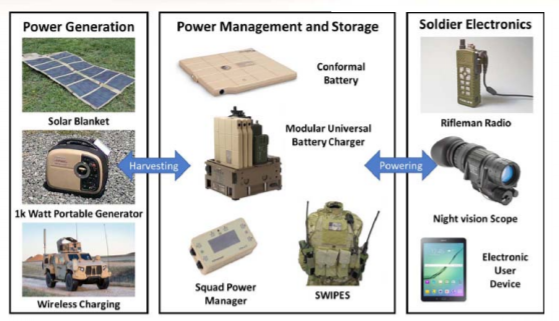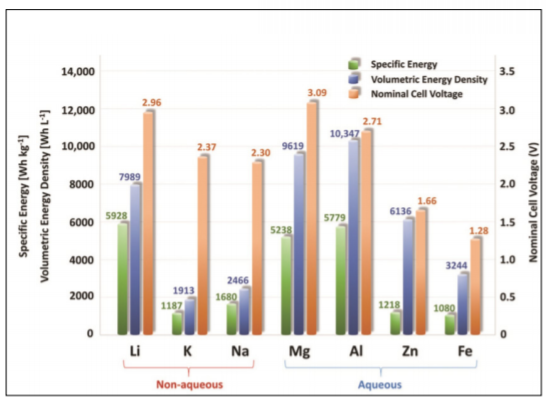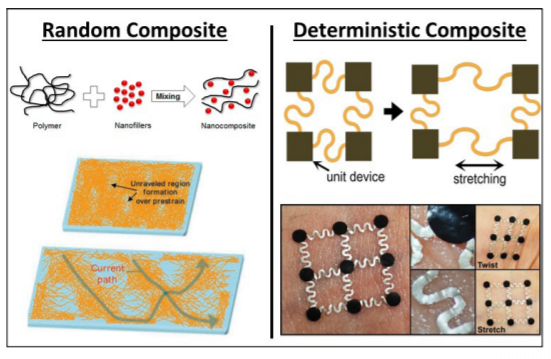
Figure 1: Operational view of power management for platoon [21-30]
In the past, soldiers were given 3-pound, brick-shaped batteries that were specifically designed for battery boxes and nonportable devices. As soldiers began to pack more electronics, these bulky batteries multiplied with them [5]. The U.S. Army Communications-Electronics Research, Development and Engineering Center developed a solution called the Soldier Wearable Integrated Power Equipment System, known as SWIPES, that provides an integrated solution for mission-critical electronics that can flex and stretch with the body while reducing weight [5]. SWIPES integrates all electronics carried by the warfighter into one tactical vest. Each electronic device is housed in a specific pocket with an associated power cord, and all devices connect to one conformal battery [5]. The conformal battery is a thin (>1/2-inch thick) and flexible lithium-ion battery weighing just over 2 pounds [5]. Due to flammability associated with lithium-ion batteries, especially from ballistic damage, the battery is treated with a ballistic coating to protect the battery [5].
Benefits
The benefits of the conformal battery were studied with a squad power manager kit, as shown in Figure 1 [3]. A United States Military Academy study compared the conformal battery over battery swaps to power a PRC-154 Rifleman Radio and an end user device, an Android smartphone [3]. The study revealed use of the small unit power (SUP) kit provided a 10-30 percent reduction in weight load compared to battery swaps [3]. Also, the large power reservoir of the conformal battery provided constant connection over interrupted battery swaps, and prevented swapping out a partially-charged battery with a fully-charged battery [3]. The study concluded the use of conformal batteries reduces weight load and the physical and mental toll on warfighters on how, when, and where to swap a battery [3,5].
Battery Chemistries
Although the current conformal battery has shown potential benefits to replace swappable batteries, significant improvements to the battery chemistry, level of conformability, and fabrication cost are critical to the military’s effort to power mission-critical electronics. The availability of numerous battery chemistries such as magnesium, aluminum, iron, zinc, and lithium-ion has been explored for rechargeable batteries, as shown in Figure 2 [6]. There has been significant interest in lithium-ion and many of its sub-chemistries due to their high theoretical specific energy (5,928 Wh/kg) and high cell voltage (2.96 V) [6]. For example, the military has recently funded research on lithium-sulfur batteries [7]. As for the next generation of lithium-ion batteries, many are looking to silicon anode because it has reported the highest known theoretical charge capacity (4,200 mAh/g) [8].

Figure 2: Theoretical specific energies, volumetric energy densities, and nominal cell
voltages various metal anodes in aqueous and non-aqueous batteries [6]. (Released)
Alternative chemistries such as magnesium and aluminum-air batteries are compatible with aqueous electrolytes and have demonstrated higher energy densities than lithium, but they experience rapid self-discharge and poor charging efficiency [6]. Zinc and iron have proven to be stable and safe chemistries, especially zinc-air and zinc-silver oxide. Zinc-based batteries are inherently safer, inexpensive, and more abundant, especially in the U.S., compared to lithium [6]. More importantly, zinc batteries have a relatively high specific energy (1,218 Wh/kg) and volumetric energy density (6,136 Wh/L) [6]. Recently, a U.S. Naval Research Laboratory team developed a novel, rechargeable, nickel-3D zinc battery as an energy-dense, safer alternative to lithium-ion [14]. When a zinc battery undergoes charging, dendrites will form and eventually grow to short the battery [14]. By implementing a porous zinc structure, the formation of dendrites is mitigated while maintaining a high capacity of 216 Wh/L along with tens of thousands recharge cycles [14].
This zinc chemistry presents a safer and cheaper battery chemistry alternative to lithium-ion with an estimated cost of $160 per kWh, when average lithium-ion battery prices are not expected to reach that value until 2025 [6,14]. Because zinc is inherently safer and all components can be exposed to air, simpler and inexpensive fabrication methods can be implemented. The complexity of lithium-ion battery fabrication amounts to nearly 40 percent of its overall cost, but screen printing can reduce the fabrication cost [6]. Screen printing is a low-cost, high-throughput fabrication where conductive inks can be applied to a patterned stencil, then a doctor blade will deposit the conductive inks onto the substrate through the holes of the pattern. Zinc batteries can be printed in four to five simple coating steps and in any desired shape. The use of conductive inks and printing technologies allows for battery conformability, enabling them to stretch, bend, flex, and twist.
Conformal Battery Development
Deterministic and random composite architecture are two approaches used to develop conformal batteries, as shown in Figure 3 [15]. In the deterministic approach, nonelastic, inorganic materials, such as metals are geometrically patterned into ultra-thin, serpentine bridges connected to rigid islands [15]. This method of strain engineering allows typically rigid materials to be more conformal by undergoing stretching and flexing. The random composite approach randomly embeds highly conductive fillers into an elastomeric matrix [15]. While random composite is highly strain-sensitive to any type of deformation, the ability to incorporate any combination of materials [15] is specifically attractive for developing conformal batteries that comprise various metallic and polymeric additives. The precise composition of conductive fillers, elastic binders, and solvents will result in formulations that can be readily applicable to inexpensive, printing technologies. This approach is compatible with air-stable, zinc-based chemistries that can be used to inexpensively print conformal batteries into a military vest.

Figure 3: Approaches for engineering stretchable electronics [31] [32] (Licensed under Creative Commons) [33].
poor capacity of <1.5 mAh/cm2 over the course of 100 recharge cycles [18].

Figure 4: Random composite and screen-printing for high-performance, conformal batteries.
Printable Batteries
Researchers at the University of California, San Diego initially used printed batteries for small patches to power wearable electronics. However, screen printing can be utilized to coat the entire inner area of a military vest. A typical military vest for an average male torso covers a surface area of 0.6 m2 [19]. The areal capacity of printed batteries will be greater than 3.5 mAh/ cm2 to achieve a capacity nearly three times the capacity of the current conformal battery (7.3 Ah) used by SWIPES. Since technology implemented by the military must be more durable than conventional consumer electronics, a higher number of charge cycles is essential. If these screen printed batteries can meet this durability requirement, they would provide a lowcost, conformal, high-performance battery solution for the dismounted warfighter.
The ability to accomplish an area capacity beyond 3.5 mAh/cm2 and a cycle life beyond 200 cycles is possible using zinc-silver oxide chemistry implemented in the printed, stretchable battery. The initial
proof-of-concept was designed for more stretchable textiles, such as spandex or nylon. For military application, flexibility with some stretch is needed to enable the printed battery to be worn inside the shell of a military vest. The random composite can control the composition of elastomer and conductive fillers, where some stretch (<20 percent) can be reformulated for the printed battery. The design of the printed battery was in a lateral design, whereas a typical battery stacks the anode, cathode, and electrolyte. The stacked design will be a far more efficient use of the printed area. The current limitation for the stacked design is a printable electrolyte that is both flexible and stretchable. A printable electrolyte will require structural durability and high ionic conductivity for high-current charge/discharging. Further improvement of anode, cathode, and electrolyte materials as well as inexpensive screen printing techniques will enhance the production of high-performance, conformal batteries.
The printed, conformal battery integrated into a tactical vest addresses the military’s vision to eliminate bulk cables using electronic textiles [5]. Ultra-thin, conductive wiring and a conformal battery can be printed into the textile to power various electronics in each designated pocket. The addition of printed, power transfer antenna in the back of the vest for wireless charging will simplify the top-down integration by enabling wireless charging by a vehicle. When a warfighter sits in a vehicle, wireless charging components embedded in the seat would seamlessly charge the printed power vest [5]. This presents a great tactical advantage in the event a warfighter must quickly abandon the vehicle.
The conformal, wearable battery will require durability and performance testing under actual environmental conditions and power expectations of a 72-hour mission. Factors such as varied temperature and humidity could affect battery performance, especially in a 24-hour cycle. Therefore,
these environmental factors must be evaluated. Additionally, determining if the battery
is washable, especially when exposed to detergents or harsh temperatures and deformations from a typical tumble dry, must also be evaluated.
This concept can be further applied to other devices in the SUP kit. For example, batteries
can be printed on the opposite side of a solar blanket, which would allow for additional energy storage and eliminate the setup time for the solar blanket with a modular universal battery charger and battery. The military has been considering implementing energy harvesting technologies into the warfighter uniform, such as wearable solar panels on the helmet or rucksack [5]. Other small kinetic devices that
oscillate back and forth for harvesting energy from walking have also gained significant
investment from the military [20]. Numerous energy harvesting technologies such as thermoelectric, piezoelectric, biofuel cells, and triboelectric have been studied to self-power wearable electronics, and all of these energy harvesting technologies could provide trickle charge to extend the life of the printed, conformal battery [5].
Conclusion
The Department of Defense has been at the forefront of developing and supporting new battery chemistries to maintain its technological advantage on the ground. As reliance on wearable electronics continues to grow, so does the burden of these conformal power technologies on warfighter mental and physical stamina. Debate will continue on which materials and battery chemistry will prevail based on cost and performance, but the fabrication and conformability of batteries is equally critical to
the success of warfighter wearable systems. Inexpensive printing technologies offer a solution that enables the combination of deterministic and random architectures for implementation of conformal batteries into a tactical vest. Merging printing technologies and advanced materials will lessen warfighter weight load and seamlessly power warfighter electronics, allowing warfighters to focus on their mission and not on battery replacement.
Reference
1. Magnuson, S. (2017, June 1). Power-hungry devices challenge Army researchers.
National Defense. Retrieved from http://
www.nationaldefensemagazine.org/articles/2017/6/1/power-hungry-devices-challenge-army-researchers (accessed July 6,
2017)
2. Robinson, P. (June 10). What do soldiers carry and what does it weigh [Web log
post]. Retrieved from https://protonex.com/ blog/what-do-soldiers-carry-and-whats-itsweight/ (accessed July 6, 2017)
3. Aten, C., Michalowski, A., Williams, M., Stamm, C., & Evangelista, P. (2015). Soldier
power operational benefit analysis. Industrial and Systems Engineering Review, 3(2),
82-90. Retrieved from http://watsonojs.binghamton.edu/index.php/iser/article/view/41
(accessed July 6, 2017)
4. Machi, V. (2017, June 19). Sumo wrestlers inspire new exoskeleton tech. National Defense. Retrieved from http://www.nationaldefensemagazine.org/articles/2017/6/19/
sumo-wrestlers-inspire-new-exoskeleton-tech (accessed July 6, 2017)
5. Armed with Science. (2014, February 18). SWIPES, the integrated power source [Web
log post]. Retrieved from http://science. dodlive.mil/2014/02/18/swipes-the-integrated-power-source/ (accessed July 6, 2017)
6. Fu, J., Cano, Z. P., Park, M. G., Yu, A., Fowler, M., & Chen, Z. (2016). Electrically Rechargeable Zinc-Air Batteries: Progress, Challenges, and Perspectives. Advanced Materials, 29(7), 1604685. doi:10.1002/
adma.201604685
7. Casey, T. (2015, July 14). Yet another energy storage company takes on Tesla. Retrieved from https://cleantechnica. com/2015/07/14/yet-another-energy-storage-company-takes-tesla/ (accessed July 6, 2017)
8. Chan, C. K., Peng, H., Liu, G., Mcilwrath, K., Zhang, X. F., Huggins, R. A., & Cui, Y. (2007). High-performance lithium battery anodes using silicon nanowires. Nature Nanotechnology, 3(1), 31-35. doi:10.1038/nnano.2007.411
9. Wang, C., Wu, H., Chen, Z., Mcdowell, M. T., Cui, Y., & Bao, Z. (2013). Self-healing
chemistry enables the stable operation of silicon microparticle anodes for high-energy lithium-ion batteries. Nature Chemistry, 5(12), 1042-1048. doi:10.1038/nchem.1802
10. Liu, N., Lu, Z., Zhao, J., Mcdowell, M. T., Lee, H., Zhao, W., & Cui, Y. (2014). A pomegranate-inspired nanoscale design for largevolume-change lithium battery anodes.
Nature Nanotechnology, 9(3), 187-192. doi:10.1038/nnano.2014.6
11. Irfan, U. (2014, December 18). How lithium ion batteries grounded the Dreamliner. Scientific American. Retrieved from https://www.scientificamerican.com/article/how-lithium-ion-batteries-grounded-the-dreamliner/ (accessed July 6, 2017)
12. Lee, S. (2017, June 27). Samsung revives once-exploding Galaxy Note 7 as ‘Fan Edition’ models [Web log post]. Retrieved from http://www.siliconbeat.com/2017/06/27/samsung-revives-exploding-galaxy-note-7- fan-edition-models/ (accessed July 6, 2017)
13. Golgowski, N. (2017, April 25). Fibit denies claim woman’s device exploded. HuffPost. Retrieved from http://www.huffingtonpost. com/entry/woman-claims-fitbit-exploded_us_58ff54a7e4b0b6f6014ac404 (accessed July 6, 2017)
14. Parker, J. F., Chervin, C. N., Pala, I. R., Machler, M., Burz, M. F., Long, J. W., & Rolison, D. R. (2017). Rechargeable nickel–3D zinc batteries: An energy-dense, safer alternative to lithium-ion. Science, 356(6336), 415-418. doi:10.1126/science.aak9991
15. Wang, Y., Zhu, C., Pfattner, R., Yan, H., Jin, L., Chen, S., . . . Bao, Z. (2017). A highly stretchable, transparent, and conductive polymer. Science Advances, 3(3). doi:10.1126/sciadv.1602076
16. Kumar, R., Shin, J., Yin, L., You, J., Meng, Y. S., & Wang, J. (2016). All-printed, stretchable Zn-Ag2O rechargeable battery via hyperelastic binder for self-powering wearable electronics. Advanced Energy
Materials, 7(8), 1602096. doi:10.1002/aenm.201602096
17. Washington, J. (2017, June 28). Westlake’s TempTraq monitors fevers through wearable patch synced with smartphone (video). Retrieved from http://www.cleveland.com/healthfit/index.ssf/2017/06/westlakes_temptraq_monitors_fe_1.html (accessed July 6, 2017)
18. Ho, C. (2017, June). Flexible Energy Storage. In Energy: Harvesting, Storage and Management for Flexible Systems in the IOT. Presentation conducted at the 2017 Flex Conference, Monterey, CA.
19. Barwood, M. J., Newton, P. S., & Tipton, M. J. (2009). Ventilated vest and tolerance for
intermittent exercise in hot, dry conditions with military clothing. Aviation, Space, and Environmental Medicine, 80(4), 353-359. Retrieved from https://www.ncbi.nlm.nih.gov/pubmed/19378904 (accessed July 6, 2017)
20. Stone, A. (2016, December 28). PowerWalk device converts soldiers’ movments into
energy. Retrieved from http://www.c4isrnet.com/articles/powerwalk-device-converts-soldiers-movement-into-energy (accessed July 6, 2017)
21. Tozer , J. L. (2013, May 7). Top tech: Solar blankets [Web log post]. Retrieved from http://science.dodlive.mil/2013/05/07/toptech-solar-blankets/ (accessed July 6, 2017)
22. INI Power Systems. (n.d.). INI Power Systems 1kW products. Retrieved from https://
www.inipowersystems.com/1kwproducts
(accessed July 6, 2017)
23. Olsewski, S. (2016, April 7). Video: Humvee replacement will be powered by banks.
Retrieved from http://www.dieselarmy.com/
news/video-humvee-replacement-will-bepowered-by-banks/ (accessed July 6, 2017)
24. Inventus Power. (2016, May 27). Helping
solve the portable power needs of today’s
warfighter. Retrieved from http://inventuspower.com/helping-solve-portable-power-needs-todays-warfighter/ (accessed July
6, 2017)
25. Thales. (n.d.). Modular universal battery charger. Retrieved from https:// www.thalesgroup.com/en/worldwide/defence/what-we-do-radio-communications-land-communications-tactical-radios/modular (accessed July 6, 2017)
26. Protonex. (n.d.). SPM-612. Retrieved from https://protonex.com/products/spm-612/
(accessed July 6, 2017)
27. The Shephard News Team. (2013, February 25). Arotech receives US Army Swipes
order [Web log post]. Retrieved from https://www.shephardmedia.com/news/mil-log/arotech-receives-us-army-swipes-order/ (accessed July 6, 2017)
28. SupplyNet. (n.d.). AN/PRC-154 USB Dongle Cable. Retrieved from http://www.tacticaleng.com/an-prc-154-usb-dongle-cable


![Con Cover Image Figure 2: Theoretical specific energies, volumetric energy densities, and nominal cell
voltages various metal anodes in aqueous
and non-aqueous batteries [6]. (Released)](https://hdiac.org/wp-content/uploads/bb-plugin/cache/Con-Cover-Image-panorama-4bce611002d82d00a092708b70165c6e-60b8e1dac01c5.png)